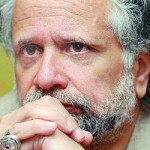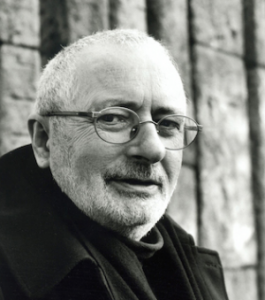 “I believe that in order to rethink the issue of the national and cinema, it is necessary to return to the question of national agency and other types of collective agencies. . . . the variety of such significations itself belies their frequent significations of ‘China’ as singular, essential, and naturalized, revealing instead not that ‘China’ is a nonexistent fiction but that it is a discursively produced and socially and historically contingent collective entity. In this sense, it is not so much China that makes movies, but movies that help to make China.”
“I believe that in order to rethink the issue of the national and cinema, it is necessary to return to the question of national agency and other types of collective agencies. . . . the variety of such significations itself belies their frequent significations of ‘China’ as singular, essential, and naturalized, revealing instead not that ‘China’ is a nonexistent fiction but that it is a discursively produced and socially and historically contingent collective entity. In this sense, it is not so much China that makes movies, but movies that help to make China.”
____Chris Berry, Can China Make Movies? Or, Do Movies Make China?
The production of images is the production not of things but of relations, not of one culture but of value between cultures; even as we see ‘Chinese’ stories on the screen, we are still confronted with an exchange between ‘China’ and the West in which these stories seek their market.”
____Rey Chow, Primitive Passions
“Connotation is not necessarily immediately graspable at the level of the message itself (it is, one could say, at once invisible and active, clear and implicit) but it can already be inferred from certain phenomena which occur at the levels of the production and reception of the  message: on the one hand, the press photograph is an object that has been worked on, chosen, composed, constructed, treated according to professional, aesthetic or ideological norms which are so many factors of connotation; while on the other, this same photograph is not only perceived, received, it is read, connected more or less consciously by the public that consumes it to a traditional stock of signs. Since every sign supposes a code, it is this code that one should try to establish. The photographic paradox can then be seen as the co-existence of two messages, the one without a code (the photographic analogue), the other with a code (the `art’, or the treatment, or the `writing’, or the rhetoric, of the photograph). … To understand a narrative is not merely to follow the unfolding of the story, it is also to recognize its construction in ‘storeys’, to project the horizontal concatenations of the narrative `thread’ on to an implicitly vertical axis; to read (to listen to) a narrative is not merely to move from one word to the next, it is also to move from one level to the next.”
message: on the one hand, the press photograph is an object that has been worked on, chosen, composed, constructed, treated according to professional, aesthetic or ideological norms which are so many factors of connotation; while on the other, this same photograph is not only perceived, received, it is read, connected more or less consciously by the public that consumes it to a traditional stock of signs. Since every sign supposes a code, it is this code that one should try to establish. The photographic paradox can then be seen as the co-existence of two messages, the one without a code (the photographic analogue), the other with a code (the `art’, or the treatment, or the `writing’, or the rhetoric, of the photograph). … To understand a narrative is not merely to follow the unfolding of the story, it is also to recognize its construction in ‘storeys’, to project the horizontal concatenations of the narrative `thread’ on to an implicitly vertical axis; to read (to listen to) a narrative is not merely to move from one word to the next, it is also to move from one level to the next.”
_____Roland Barthes, Image-Music-Text
 Above all, by dramatizing the violent and destructive process by which these archaic societies are transformed by and incorporated into the modern world, these four novelists (Hardy, Conrad, Achebe, and Llosa) testify to the havoc wreaked upon individual human lives in the name of progress. The novelists I discuss are all citizens and beneficiaries of the modern world, but they nonetheless fell compelled to record for posterity the great costs, paid in blood and pain, the peoples around the world have rendered to settle accounts with history.
Above all, by dramatizing the violent and destructive process by which these archaic societies are transformed by and incorporated into the modern world, these four novelists (Hardy, Conrad, Achebe, and Llosa) testify to the havoc wreaked upon individual human lives in the name of progress. The novelists I discuss are all citizens and beneficiaries of the modern world, but they nonetheless fell compelled to record for posterity the great costs, paid in blood and pain, the peoples around the world have rendered to settle accounts with history.
Michael Valdez Moses, The Novel and the Globalization of Culture
 Cultural seismology–the attempt to record the shifts and displacements of sensibility that regularly occur in the history of art and literature and thought–habihually distinguishes three separate orders of magnitude. At one end of the scale are those tremors of fashion that seem to come and go in rhythm with the changing generations. To a second order of magnitude belong those larger displacements whose effects go deeper and last longer, forming those extended periods of style and sensibility which are usefully measured in centuries. This leaves a third category for those overwhelming dislocations, those cataclysmic upheavals of culture, those fundamental convulsions of the creative human spirit that seem to topple even the most solid and substantial of our beliefs and assumptions, leave great areas of the past in ruins or question an entire civilization or culture.
Cultural seismology–the attempt to record the shifts and displacements of sensibility that regularly occur in the history of art and literature and thought–habihually distinguishes three separate orders of magnitude. At one end of the scale are those tremors of fashion that seem to come and go in rhythm with the changing generations. To a second order of magnitude belong those larger displacements whose effects go deeper and last longer, forming those extended periods of style and sensibility which are usefully measured in centuries. This leaves a third category for those overwhelming dislocations, those cataclysmic upheavals of culture, those fundamental convulsions of the creative human spirit that seem to topple even the most solid and substantial of our beliefs and assumptions, leave great areas of the past in ruins or question an entire civilization or culture.
Malcolm Bradbury and James McFarlane, Modernism
 Nations, like narratives, lose their origins in the myths of time and only fully realize their horizons in the mind’s eye. Such an image of the nation–or narration–might seem impossibly romantic and excessively metaphorical, but it is from those traditions of political thought and literary language that the nation emerges as a powerful historical idea in the West. … A nation is a soul, a spiritual principle. Two things, which in truth are but one, constitute this soul or spiritual principle. One lies in the past, one in the present. One is the possession in common of a rich legacy of memories; the other is present-day consent, the desire to live together, the will to perpetuate the value of the heritage that one has received in an undivided form. Man does not improvise. The nation, like the individual, is the culmination of a long past of endeavors, sacrifice, and devotion. . . . A nation is therefore a large-scale solidarity, constituted by the feeling of the sacrifices that one has made in the past and of those that one is prepared to make in the future. It presupposes a past; it is summarized, however, in the present by a tangible fact, namely, consent, the clearly expressed desire to continue a common life. A nation’s existence is, if you will pardon the metaphor, a daily plebiscite, just as an individual’s existence is a perpetual affirmation of life.
Nations, like narratives, lose their origins in the myths of time and only fully realize their horizons in the mind’s eye. Such an image of the nation–or narration–might seem impossibly romantic and excessively metaphorical, but it is from those traditions of political thought and literary language that the nation emerges as a powerful historical idea in the West. … A nation is a soul, a spiritual principle. Two things, which in truth are but one, constitute this soul or spiritual principle. One lies in the past, one in the present. One is the possession in common of a rich legacy of memories; the other is present-day consent, the desire to live together, the will to perpetuate the value of the heritage that one has received in an undivided form. Man does not improvise. The nation, like the individual, is the culmination of a long past of endeavors, sacrifice, and devotion. . . . A nation is therefore a large-scale solidarity, constituted by the feeling of the sacrifices that one has made in the past and of those that one is prepared to make in the future. It presupposes a past; it is summarized, however, in the present by a tangible fact, namely, consent, the clearly expressed desire to continue a common life. A nation’s existence is, if you will pardon the metaphor, a daily plebiscite, just as an individual’s existence is a perpetual affirmation of life.
Homi Bhabha, Nation and Narration
 Criticism is not a passage from text to reader. Its task is not to redouble the text’s self-understanding, to collude with its object in a conspiracy of eloquence. Its task is to show the text as it cannot know itself, and to manifest those conditions of its making (inscribed in its very letter) about which it is necessarily silent. It is not just that the text knows some things and not others; it is rather that its very self-knowledge is the construction of a self-oblivion. To achieve such a showing, criticism must break with its ideological pre-history, situating itself outside the space of the text on the alternative terrain of scientific knowledge.
Criticism is not a passage from text to reader. Its task is not to redouble the text’s self-understanding, to collude with its object in a conspiracy of eloquence. Its task is to show the text as it cannot know itself, and to manifest those conditions of its making (inscribed in its very letter) about which it is necessarily silent. It is not just that the text knows some things and not others; it is rather that its very self-knowledge is the construction of a self-oblivion. To achieve such a showing, criticism must break with its ideological pre-history, situating itself outside the space of the text on the alternative terrain of scientific knowledge.
Terry Eagleton, Criticism and Politics, 1976

